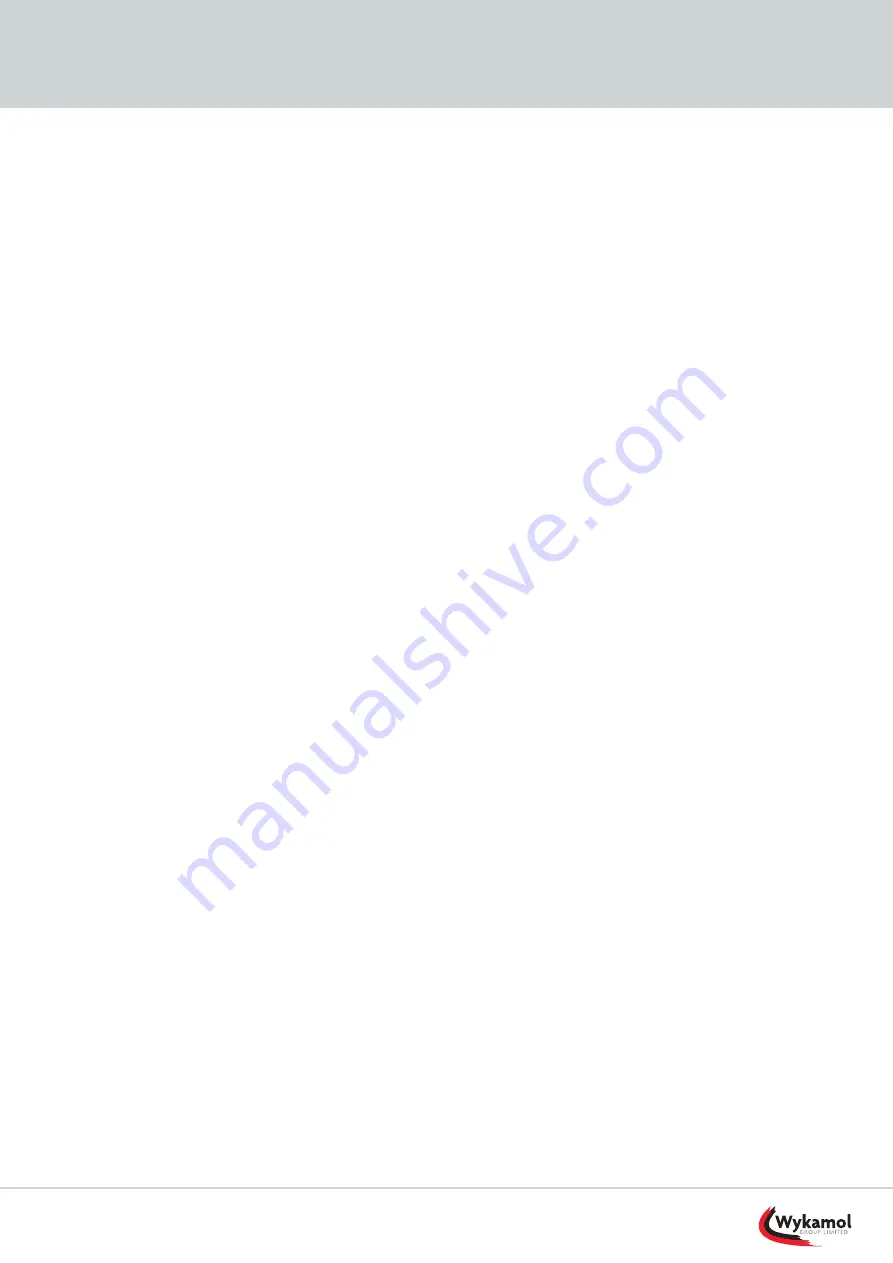
WASTE WATER PUMPING SYSTEMS
Wykamol SumpFlo
™
21/44
Installation and operating guidelines
Technical advice: 0845 400 6666
www.wykamol.com
j) Measure and cut a length of horizontal Pipe required between the placed Socket Union (3) and Elbow
(2) to be positioned directly above the Socket Union (3), taking into your measurement the length of
pipe inserted into the fittings (do not use solvent glue at this stage).
k) Measure and cut a length of vertical Pipe required between the placed Elbow (2) and Socket Union
(3), taking into your measurement the length of pipe inserted into the fittings (do not use solvent glue
at this stage).
l) Chamfer, clean and dry the connection edges of the PVC lengths, using an appropriate PVC Solvent
Cleaning Fluid, making sure these areas on the pipe and within the fitting are free from any debris/
dirt.
m) Check all the pipework is in place correctly before applying plenty of PVC Solvent Cement on
required connections, wiping away any excess that may become visible with a clean cloth.
n) For connection of the external discharge pipework, you will be left with 2no. 1¼” PVC male thread
on the outside of the chamber. We recommend that you use 1¼” Class E PVC Pressure Pipe, but
should the installer wish to use 36mm OD Solvent Weld Waste Pipe (white), 2no. PVC 1¼” Coupling
Female TH/TH (6) and 2no. 32mm Male Iron (7) is supplied within the fittings kit.
To apply these connections, apply PTFE tank to the male threads of the Tank Connector and Male
Iron. Screw the 1¼” Coupling Female TH/TH (6) onto the Tank Connector, following the same process
for the Male Iron into the Coupling.
Connection to be made with 36mm OD Solvent Weld Waste Pipe into the Male Iron would be as per
point g) and h) as above.
2. Select a suitable location for the pumping station. It is extremely important to site the system with permanent
access in mind for routine maintenance of the system.
3. Prepare the chamber for all connection, incoming pipe/s (inlet/s and cable duct). To do this you must select the
location and drill the appropriate sized inlet/s and cable duct for the connections (see Section 7 Accessories’
for inlet and cable duct rubber seals).
4. A reinforced waterproof concrete sump must be formed for the chamber to be installed within. This will
ensure that any pressure present is not transferred onto the chamber itself. Furthermore, when constructing
the reinforced waterproof concrete sump it is important that adequate space is made for connections to the
chamber e.g. inlet/s, cable ducts and discharge. Consideration must also be made regarding the depth and
orientation of all connections to ensure that they line up with the chamber.
It is imperative that you consult with a structural and waterproofing engineer when designing the reinforced
waterproof concrete sump ensuring that it allows for the anticipated pressures and that they are not transferred
onto the chamber.
5. In all instances, the chamber MUST be positioned on a flat, level, concrete base of dimensions sufficient to
fully support the base of the chamber. Once the reinforced waterproof concrete sump has been formed, lay
a 100mm mass concrete within your reinforced waterproof concrete sump, carefully position the chamber
onto the WET concrete base ensuring that no loose debris is inadvertently knocked onto the base, under the
chamber during this procedure. Push the chamber into the wet concrete ensuring that the concrete is fully
imbedded into the bottom of the chamber. Position it such that the inlet/s, cable duct and discharge pipe work
are correctly aligned.
















































